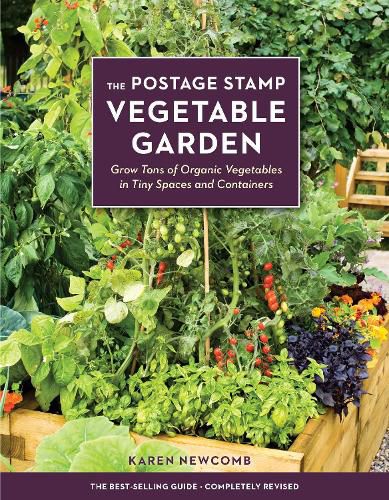Readings Newsletter
Become a Readings Member to make your shopping experience even easier.
Sign in or sign up for free!
You’re not far away from qualifying for FREE standard shipping within Australia
You’ve qualified for FREE standard shipping within Australia
The cart is loading…






This classic gardening bestseller uses ecologically friendly, intensive biodynamic methods to produce large amounts of vegetables in very tiny spaces. Revised for an all new generation of gardeners, the 40th anniversary edition includes brand new information on the variety of heirloom vegetables available today and how to grow them the postage stamp way.
To accommodate today’s lifestyles, a garden needs to fit easily into a very small plot, take as little time as possible to maintain, require a minimum amount of water, and still produce prolifically. That’s exactly what a postage stamp garden does. Postage stamp gardens are as little as 4 by 4 feet, and, after the initial soil preparation, they require very little extra work to produce a tremendous amount of vegetables–for instance, a 5-by-5-foot bed will produce a minimum of 200 pounds of vegetables. When first published 40 years ago, the postage stamp techniques, including closely planted beds rather than rows, vines and trailing plants grown vertically to free up space, and intercropping, were groundbreaking. Now, in an ever busier world, the postage stamp intensive gardening method continues to be invaluable for gardeners who wish to weed, water, and work a whole lot less yet produce so much more.
$9.00 standard shipping within Australia
FREE standard shipping within Australia for orders over $100.00
Express & International shipping calculated at checkout
This classic gardening bestseller uses ecologically friendly, intensive biodynamic methods to produce large amounts of vegetables in very tiny spaces. Revised for an all new generation of gardeners, the 40th anniversary edition includes brand new information on the variety of heirloom vegetables available today and how to grow them the postage stamp way.
To accommodate today’s lifestyles, a garden needs to fit easily into a very small plot, take as little time as possible to maintain, require a minimum amount of water, and still produce prolifically. That’s exactly what a postage stamp garden does. Postage stamp gardens are as little as 4 by 4 feet, and, after the initial soil preparation, they require very little extra work to produce a tremendous amount of vegetables–for instance, a 5-by-5-foot bed will produce a minimum of 200 pounds of vegetables. When first published 40 years ago, the postage stamp techniques, including closely planted beds rather than rows, vines and trailing plants grown vertically to free up space, and intercropping, were groundbreaking. Now, in an ever busier world, the postage stamp intensive gardening method continues to be invaluable for gardeners who wish to weed, water, and work a whole lot less yet produce so much more.